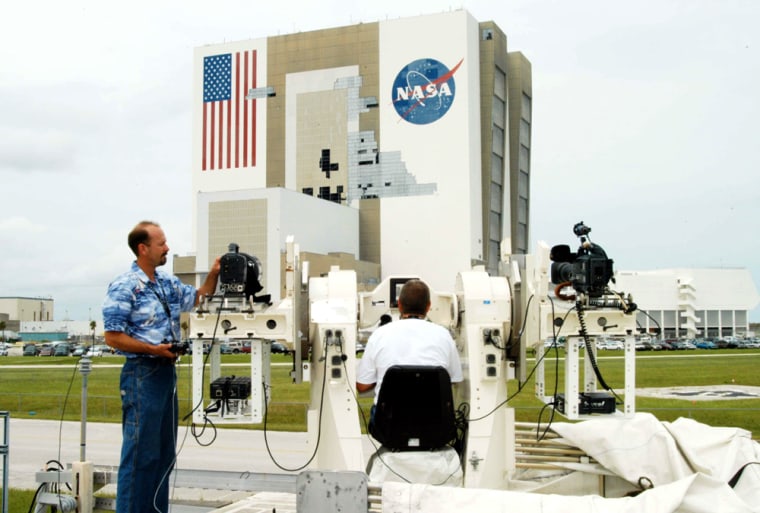Hurricanes Charley, Frances and Ivan have cost NASA a least a week’s worth of work and upset its tight schedule for resuming shuttle flights, throwing into doubt the space agency’s plans to launch Discovery in early spring.
“Can they make that up? It’s too early to say. It was a tight schedule to start with, and the facility survey is still going on,” Apollo astronaut Thomas Stafford, co-chairman of the task force overseeing NASA’s return-to-flight effort, said Thursday.
Charley and Frances caused widespread damage to NASA’s launch site in mid-August and over the Labor Day weekend. Then work on the redesigned external fuel tank for Discovery had to be halted this week when Lockheed Martin Corp.’s assembly plant in New Orleans was shut down as Ivan drew near.
“The impact there is ... at least a week, and that’s assuming no damage from the storm,” said task force co-chairman Richard Covey, a former shuttle commander. The tank was supposed to be delivered to Kennedy Space Center in early November.
Answer expected within weeks
Shuttle managers are still figuring out what effect the storms will have on the launch schedule, and should have an answer within several weeks, Covey said.
“And of course the threat of Jeanne now,” he added, referring to the newest hurricane, which could reach Florida by the beginning of next week.
Moreover, technical challenges remain and are probably even more of a hurdle than the storms, Stafford said. The biggest hurdle is being able to ensure that no sizable pieces of foam or other debris come off the fuel tank at liftoff, he said. A suitcase-size chunk of foam insulation brought Columbia down last year.
So far, NASA has fulfilled five of the 15 return-to-flight recommendations put forth by the Columbia accident investigators. The space agency needs to complete work on the others in the next few months — and the Return to Flight Task Group needs to approve them no later than December — for a launch to occur in March or April.
NASA’s engineering analyses of the redesigned tanks — namely, how much and what kind of foam shedding could occur without causing any damage — will probably not even be finished until February.
Can space station serve as refuge?
Both Stafford and Covey said NASA is making progress on its ability to detect and repair damage to the shuttle’s thermal layer in orbit. Nonetheless, astronauts will not be able to patch a hole as big as the one that brought down Columbia, at least not on the first few flights, they said.
NASA’s backup plan, in case of irreparable shuttle damage, would be for the seven astronauts to move into the international space station until a rescue ship is launched. But that assumes all the station’s life-support equipment is working.
For more than a week, the primary oxygen generator on the station has been out of order because of clogged lines and other problems. The two-man crew has tapped into the oxygen supply of a docked cargo ship.
If the oxygen generator is still not working right next year and cannot be replaced, that alone would probably be enough to keep Discovery on the ground, Covey said.
